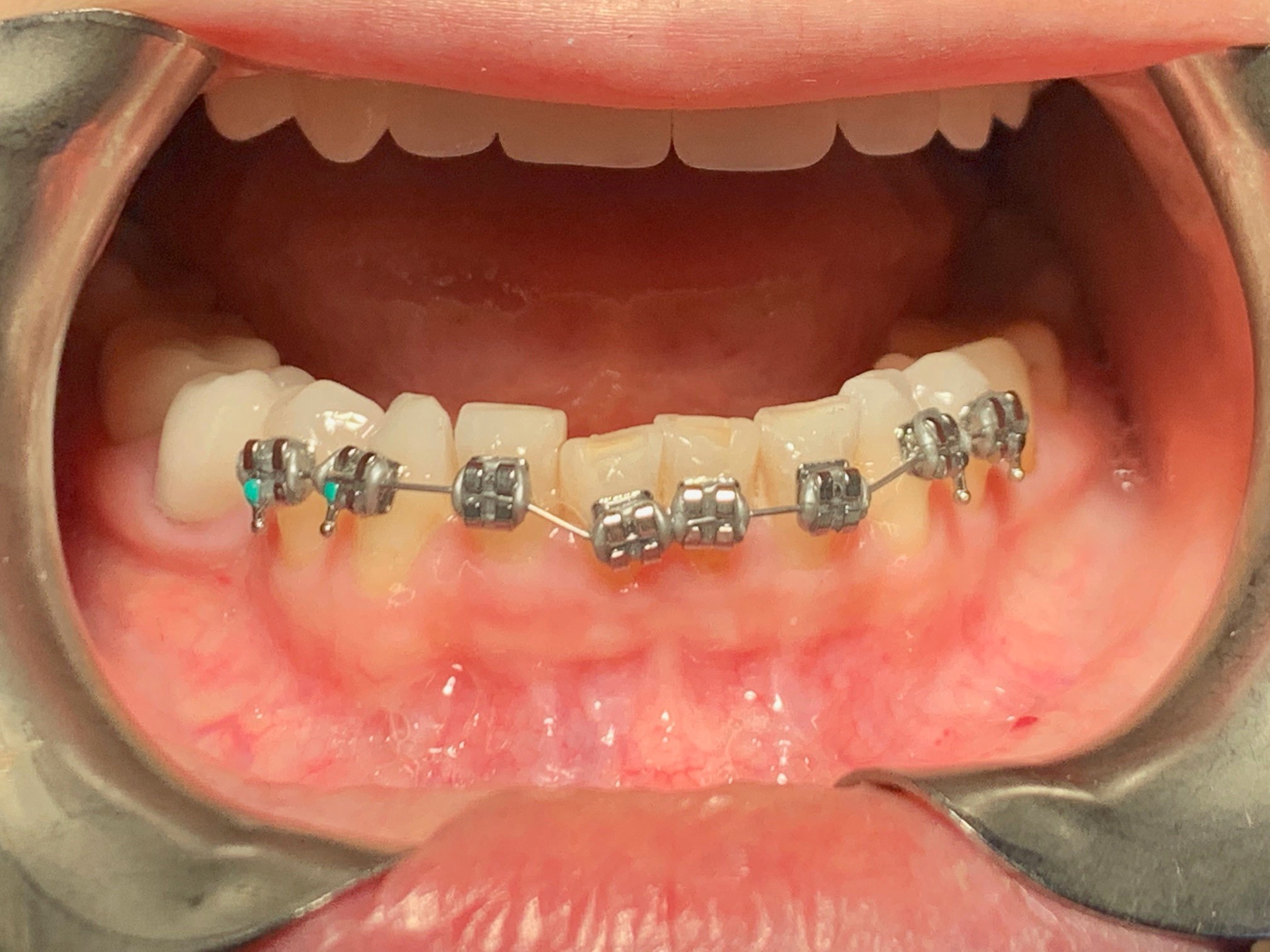
As a dentist, I am asked the question a lot – “What is the difference between Invisalign and Fixed Braces Tracey – What would you have?”
Let me give you an unbiased view, to begin with:
Introduction:
Having a better smile is a desire shared by many. Dental braces have long been the go-to solution for correcting misaligned teeth and achieving a confident smile. However, with advancements in orthodontic technology, patients now have more choices than ever. Two popular options for teeth straightening are traditional fixed braces and Invisalign.
In this blog, let me explore the differences, benefits, and considerations for each, helping you decide on the best treatment for your dental needs.
Fixed Braces:
 Fixed or traditional braces have been the standard for orthodontic treatment for decades. These braces are metal or ceramic brackets attached to the teeth and connected by wires. Dentists adjust the tension in the wires to shift the teeth into the desired position gradually.
Fixed or traditional braces have been the standard for orthodontic treatment for decades. These braces are metal or ceramic brackets attached to the teeth and connected by wires. Dentists adjust the tension in the wires to shift the teeth into the desired position gradually.
Here are some key features and advantages of fixed braces:
- Effectiveness: Fixed braces can address various dental issues, from simple misalignment to complex malocclusions. They provide precise control over tooth movement, making them highly effective in achieving desired results. I like these as we can “tweak” things as we go along.
- Suitable for All Cases: Fixed braces are the preferred option for patients with more severe orthodontic problems, such as significant crowding, crossbites, or open bites. They need experience and knowledge to use them. James at Tracey Bell has a vast knowledge.
- Affordability: Generally, fixed braces are often more cost-effective than other orthodontic treatments. Yes, Invisalign is often more expensive
- No Compliance Required: Unlike removable aligners, fixed braces stay on your teeth throughout the treatment period, eliminating the need to remember to wear them consistently.
Considerations for Fixed Braces:
- Aesthetics: Modern fixed braces come in more discreet options like ceramic brackets but are still more noticeable than Invisalign aligners.
- Oral Hygiene: Maintaining oral hygiene can be a bit more challenging with fixed braces due to the presence of brackets and wires, requiring special attention to cleaning around them.
- Dietary Restrictions: Patients with fixed braces should avoid certain foods that could damage the props, such as sticky or hard foods.
In conclusion, I love fixed braces. At the age of 50, I had my lower teeth straightened, and I chose fixed.
4 of my 6 children have had fixed
I like fixed braces as they work, they are predictable, and faster
Invisalign:

Invisalign, a relatively new (10-12year) orthodontic system, offers a discreet and convenient alternative to traditional braces. It uses a series of clear, removable aligners custom-made for each patient’s teeth. These aligners gradually shift the teeth into the desired position. Let’s explore the benefits and considerations of Invisalign:
- Invisibility: The primary advantage of Invisalign is its near-invisibility. The clear aligners are barely noticeable, making them appealing to adults and teenagers who prefer a more discreet treatment option. The marketing is brilliant, and that is why you often ask for them – SO TRUE
- Removability: Invisalign aligners are removable, allowing you to eat, drink, and practice oral hygiene with ease. There are no dietary restrictions, and cleaning your teeth is as simple as brushing and flossing normally.
- Comfort: The smooth plastic aligners are generally more comfortable than traditional braces, as they don’t have sharp edges or wires. However, no brace after a while should be uncomfortable.
- Predictable Results: Invisalign treatment employs advanced computer simulations to show the projected progress of the treatment, giving you a clear idea of the expected outcome.
Considerations for Invisalign:
- Compliance is Essential: Patients must wear their aligners for 20-22 hours daily for successful results. Compliance is critical for the treatment’s success.
- Not Suitable for All Cases: While Invisalign can correct various dental issues, it may not be ideal for severe cases or specific complex orthodontic problems.
- Cost: Invisalign treatment can be slightly more expensive than traditional braces, depending on the case’s complexity and the treatment length.
Conclusion:
 Choosing between fixed braces and Invisalign depends on various factors, such as the complexity of your dental issues, lifestyle preferences, and budget. Both options offer excellent results; the best way to decide is to consult an experienced dentist who provides more than one type of brace.
Choosing between fixed braces and Invisalign depends on various factors, such as the complexity of your dental issues, lifestyle preferences, and budget. Both options offer excellent results; the best way to decide is to consult an experienced dentist who provides more than one type of brace.
They can assess your needs and recommend the most suitable treatment plan to achieve your dream smile.
Remember, no matter which option you choose; the result will be worth the effort – a beautiful, healthy smile that will boost your confidence and leave a lasting impression on others.
In my personal experience, fixed braces win every time, but ultimately the choice is yours.
Dr James Garritt – provides all consultations at Tracey Bell – Isle of Man.
We have thousands of cases to share and 30 years of experience – showing our age.
Click here for #isleofmandentist on Instagram
Click here for further details on Invisalign.
Click here for Kevin Obreins Blog.
Back to blog